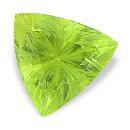|
ClassicGems.net |
|
|
 |
|
Titanite (also known as Sphene) |
|
|
Discovered in 1795; IMA status: Valid (pre-IMA; Grandfathered) |
|||
|
|
|
Chemistry |
|
|
|
|
|
CaTiSiO5 |
|
|
|
Calcium Titanium Silicate |
|
Emperical Chemical Formula: |
Na0.97)∑=8.98V |
|
Molecular Weight: |
197.76 gm |
|
Composition: |
Calcium |
19.25 % |
Ca |
26.94 % |
CaO |
|
|
La,Ce,Pr,Nd,Sm |
3.64 % |
RE |
4.25 % |
REE2O3 |
|
|
Titanium |
18.16 % |
Ti |
30.29 % |
TiO2 |
|
|
Aluminum |
2.73 % |
Al |
5.16 % |
Al2O3 |
|
|
Iron |
1.41 % |
Fe |
2.02 % |
Fe2O3 |
|
|
Silicon |
14.20 % |
Si |
30.38 % |
SiO2 |
|
|
Oxygen |
39.64 % |
O |
|
|
|
|
Fluorine |
0.96 % |
F |
0.96 % |
F |
|
|
— |
— % |
F |
-0.40 % |
-O=F2 |
|
|
|
100.00 % |
|
99.60 % |
= TOTAL OXIDE |
|
|
|
||||
|
Classification |
|
|
|
|
|
SILICATES (Germanates) |
|
|
8/B.12-10 |
|
|
|
9 : SILICATES (Germanates)
|
|
Related to: |
Titanite Group (structurally related to Tilasite Group). Titanite - Malayaite Series. The titanium analogue of Malayaite and Vanadomalayaite. Isostructural with Durangite and Tilasite. |
|
Members of Group: |
Titanite Group: Lederite (of Shepard), Malayaite, Natrotitanite, Titanite, Vanadomalayaite |
|
Varieties: |
Chromian Titanite, Eucolite-Titanite, Greenovite, Grothite, Keilhauite, Lederite (of Shepard), Stanniferous Titanite, Yttrian Titanite |
|
Synonyms: |
Aspidelite, Castellite, Ligurite, Menakerz, Sphen, Sphene, Titanite (of Klaproth) |
|
|
|
|
Crystal Data |
|
|
|
|
|
Crystals wedge-shaped, flattened or prismatic by extension along [110], to 16 cm; compact, massive |
|
|
On [100], contact and penetration; less commonly lamellar on [221] |
|
|
|
|
|
Physical Properties |
|
|
|
|
|
Distinct on [110], Imperfect on [100] and [112]; parting due to twinning on [221] |
|
|
Sub-Conchoidal |
|
|
Brittle |
|
|
5.0 - 5.5 |
|
|
3.48 - 3.60 (g/cm3) |
|
|
None |
|
|
Mild; GRapi = 3,805.77 (Gamma Ray American Petroleum Institute Units) |
|
|
Other: |
May be metamict. |
|
|
|
|
Optical Properties |
|
|
|
|
|
Colorless, Reddish Brown, Red, Yellow, Green, Gray, Black |
|
|
Transparent to Translucent, Opaque |
|
|
Adamantine to Resinous |
|
|
1.843 - 2.110 Biaxial ( + ) |
|
|
0.100 - 0.160 (high) |
|
|
Extreme; r > v |
|
|
Visible; distinct when deeply colored; X = nearly colorless; Y = yellow to green; Z = red to yellow-orange |
|
|
|
|
|
Occurances |
|
|
|
|
|
Geological Setting: |
A common accessory mineral in intermediate and felsic plutonic rocks, pegmatites, and alpine veins. In gneisses, schists, and some skarns; rarely detrital. |
|
Common Associations: |
Albite, Allanite, Apatite, Biotite, Calcite, Chlorite, Diopside, Epidote, Ilmenite, Magnetite, Monazite, Nepheline |
|
Common Impurities: |
Fe, Y, Mn, Al, Ce, Sr, Na, Nb, Ta, Al, Mg, V, F, Zr, Sn |
|
Type Locality: |
Titanite occurrence, Hauzenberg, Lower Bavaria, Bavaria, Germany |
|
Year Discovered: |
1795 |
|
View mineral photos: |
|
|
|
|
|
More Information |
|
|
|
|
|
|
|
|
|
|
|
Sphene (also known as Titanite) is a beautiful gem with high dispersion, high refractive index (greater than Diamond), high birefringence and intense red, green and yellow colors. An intensly vivid green, chromium (Cr) rich variety of Titanite exists called Chromian Titanite. Unfortunately, it also has low hardness and is brittle so not recommenced for jewelry. Sphene is typically slightly to moderately included and clean gems are particularly rare and beautiful. Sphene is mildly radioactive due to the presence of the Cerium (Ce) and other Rare Earth Elements (REE). Because Sphene is a mildly radioactive mineral it should be stored away from other gems and minerals that are subject to damage from radioactivity and of course human exposure should be limited. Sphene is often metamict due to the presence of radioactive Cerium (Ce) in its chemical composition. Metamictization is a natural, gradual process of destruction of the internal crystal structure of a mineral due to radiation present in the mineral or from nearby external radiation. Metamictization eventually leaves the mineral amorphous or without any internal crystal structure. Once this process is complete the mineral is described as metamict. Titanite was named in 1795 by Martin Klaproth for its high titanium content (24%). The name Sphene, a common synonym of Titanite, is from the Greek word sphenos for wedge referring to its characteristic wedge-shaped crystals, was introduced in 1801 by Rene Just Haüy. Notable occurances of gemmy crystals include Gilget and Badakhshan Provinces, Afghanistan; Pi~no Solo. From Campo do Boa, Capelinha, Minas Gerais, Brazil; Antsiranana and Tuléar Provinces, Madagascar; Skardu District, Baltistan, Northern Areas, Pakistan; and Subpolar Ural Mountains, Russia. |
|
|
Titanite (Sphene) gems for sale: We have not photographed our Titanite (Sphene) gems yet. Please check back soon. |